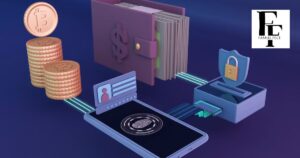Today, a lot of companies develop such systems for electronic payment and exchange between various companies. They do this in several ways, one of which is through the NWEDI-edi payments flex program.
By supporting NWEDI payments in EDI formats, NWEDI EDI Payments Flex becomes a convenient way for businesses to streamline how they create, process, and pay invoices through electronic systems. These firms now are processing and transmitting very critical financial documents and info such as checks, via secured online networks and systems instead of paper, faxes and mail.
The flow of this information electronically is the main source of this EDI Next-Wave Direct Invoice Payments that helps with business operations. It is highly efficient and consumes less time, and has fewer errors as compared to traditional methods of logging in information on paper. People can enter into business with trading partners located anywhere in the world through digital information sharing and payment flexibility.
How Do NWEDI Charges Show Up on Your Bank Statement?
Your bank may use codes too, like numbers or letters, to categorize different types of charges. This includes NWEDI charges so they’re separate from other fees. Most importantly, the details on your statement provide information about which transaction the NWEDI charge is connected to. By taking a close look, you can understand why it was applied to your account and if it was done correctly.
Monitor Account Activity
It’s important to check your bank statement and account balance regularly. Review what transactions are coming in and out of your account. Make sure you recognize all of the activities. Pay attention to any charges you don’t understand or that seem strange. Keeping a close eye on your account helps spot problems early.
Avoid Overdrawing Your Account
Be careful not to spend more money than what you have in your account. Going over your balance can result in overdraft fees from your bank. Those extra charges can be avoided by maintaining funds to cover your withdrawals and payments. Pay attention to your spending so you don’t overdraw.
Set Up Alerts
Many banks allow you to set up text or email alerts. You can choose different events that will trigger a notification, like low balance levels. Alerts help prevent overdrafts by warning you before issues happen. Alerts also notify you about large withdrawals or payments so you stay on top of your account activity.
Manage Your Finances Wisely

Making smart financial choices is important. Create a budget that matches your income and expenses. Pay bills on time to avoid late fees. Don’t take on more debt than you can handle. Being responsible with your money means less risk of unwanted fees or problems with your bank accounts.
Contact Your Bank
If you have any questions about charges on your bank statement, don’t hesitate to call your bank. Speaking to a representative can help explain unclear fees or transactions. They want to ensure you understand your statements and fees. Your bank can also investigate any charges you believe were made in error. It’s important to contact them right away with any concerns.
Transaction Description
On your bank statement, each transaction will have a short description providing some details. This could include what the charge was for such as a payment, withdrawal, or fee. The descriptions help identify what each transaction relates to so you can understand your statement.
Amount
The amount field shows how much money was involved in each transaction. For charges, it will state how much you were billed. For deposits or withdrawals, it will say how much was added or removed from your account balance.
Date
Your statement provides the date on which each transaction occurred. Knowing the dates helps keep your records organized and makes it easy to check against receipts or other finances. It also helps ensure accuracy if transactions are posted on the correct dates.
Transaction Code
Your bank may assign a short code or number to each transaction on your statement. These codes help categorize different types of activities like deposits, withdrawals, or fees. A transaction code can identify if a charge is related to interest or payments. Understanding the codes provides additional clarity on your statement.
Understanding NWEDI Charges
It’s important to learn what NWEDI stands for and how it relates to interest calculations. NWEDI charges exclude weekends and holidays, so knowing this will help you make sense of any fees. Take time to research the terms on your statement so you properly comprehend your banking charges and activities.
Review Account Terms and Conditions
Your agreement with the bank outlines important policies. Take a look through the terms and conditions to find details on fees, payments, overdraft protection, and more. Reviewing these guidelines ensures you’re clear on expectations and prevents surprises regarding charges. It helps you appropriately manage your account.
Read More About: What is LH Trading ATLANTA GA?
What Is NWEDI EDI PYMNTS?

Let’s discuss in detail:
NWEDI
Stands for “Non-Working Day Excluded Interest.”
Indicates interest calculations that exclude weekends and holidays
EDI
Abbreviation for “Electronic Data Interchange”
Refers to the electronic exchange of business information between companies in a standard format
PYMNTS
Short for “payments.”
In this context, it refers to electronic funds transfers or payment transactions processed via EDI
NWEDI EDI payments flex vs. Traditional Forms of Payment through EDI
| NWEDI EDI payments flex | Traditional Forms of Payment through EDI |
| Facilitates flexible payment options through electronic data interchange (EDI) systems. Interest calculations exclude non-working days. | Traditional methods involve exchanging paper-based financial documents like invoices and purchase orders between businesses. |
| Payments can be customized to meet unique business needs through tailored EDI payment processes. | Focus on standard electronic transaction formats with set guidelines and procedures. |
| Streamline payment flexibility by automating flexible options like expedited payments or variable due dates. | More standardized with less flexibility in payment terms and timing. |
| Faster processing as it is fully electronic without paper. | It may still involve some manual and physical aspects like printing, signing, and mailing documents. |
| Require EDI software integration and customized configurations. | Fewer technology requirements and upfront costs for basic electronic document exchange. |
| Interest charges factor in flexible payment terms enabled through automation. | Interest calculations based on standard business payment cycles. |
Traditional Forms of Payment through EDI

In the past, businesses mostly used paper-based methods to make and receive payments with their trading partners. They would mail paper invoices back and forth, then wait for paper checks in the mail. This traditional process could take a long time and risk losing or mixing up paperwork.
Now, businesses can use electronic data interchange (EDI) as a better way to exchange financial documents electronically instead of on paper. With EDI’s traditional forms of payment, businesses can send each other digital orders, invoices, and records in a standard format.
While it’s an improvement over mail, the traditional EDI process is still relatively basic and doesn’t have as many features as newer EDI payment methods that are fully automated.
Read More About: What is the CCB MADISON charge on your bank statement?
Discovering NWEDI EDI payments flex
If you notice an unfamiliar charge listed as NWEDI EDI payments flex on your bank statement, it’s normal to feel confused or concerned. These odd-sounding charges may raise questions about what service they’re for and whether they were authorized.
The first step is not to panic. Take time to carefully examine all details of the transaction, such as the date, amount, and any description provided. This can help identify the origin if it’s something legitimate you previously arranged.
Review Your Bank Statement
Take a close look at your recent bank statements, both online and printed copies. Check for any NWEDI EDI payments flex charges you don’t recognize. Note details like dates, amounts, and any associated account numbers. This helps identify the questionable transactions to address with your bank.
Contact Your Bank
Call your bank right away and clearly explain that you believe fraudulent charges were made to your account. Provide specifics about the suspicious NWEDI EDI payments flex transactions you uncovered, including dates and dollar amounts. The bank can investigate and start the dispute process.
Request Investigation
Let your bank know you would like to request an investigation. Unauthorized charges are a serious matter. Ask them to research the transactions thoroughly and where the payments were sent. Disputing fraudulent charges protects you from liability. Your bank has procedures to resolve the issue and determine if a refund is needed.
Consider Security Measures
Now is a good time to review your account security in case of a data breach. Create strong new passwords and change PINs. Be cautious of suspicious emails or calls asking for sensitive information. Staying vigilant helps protect your account going forward.
Follow Up Regularly
Don’t just file the report and wait – follow up with your bank until the investigation is fully resolved. Check on progress regularly so your issue stays on their radar. Unanswered disputes can drag on, so staying on top of it leads to quicker results.
Take Preventive Measures
To help prevent similar fraud issues in the future, monitor credit reports and financial statements closely. Using online banking cautiously also helps avoid risks. Learning from experience makes you better prepared to handle any other situations smartly down the road.
What are NWEDI PAYMENTS Flex Charges on Your Bank Statement?

If you see a charge listed as NWEDI PAYMENTS Flex on your bank statement, it refers to fees related to flexible payment options. The NWEDI part means interest was calculated, excluding weekends and holidays.
Payment Flex” refers to flexible payment arrangements, like being able to make payments on variable dates or receiving a discount for earlier payments.
Your bank likely offers options like these to certain customers. The Flex charge on your statement is from using one of those flexible services, so don’t be concerned – it just means the fees were applied correctly based on the payment terms you agreed to with your bank. As always, call them if any charge is unclear.
PAYMENTS
The “PAYMENTS” part of a charge like NWEDI PAYMENTS Flex means it has something to do with sending or receiving money. On a bank statement, any charge labeled as a payment is related to the transfer of funds in some way, whether that’s a deposit going into your account or a withdrawal coming out.
Flex Charges
The “Flex” part refers to flexibility. Banks sometimes offer flexible payment options, meaning you can customize them to your needs. Flex charges usually involve fees for using special flexible payment services, like being able to make a payment on different dates. It gives customers more choice in how and when they pay, but sometimes small fees apply for the extra flexibility.
Implementation of NWEDI EDI payments

When a business decides to use NWEDI EDI payments, there is some setup required. First, the company needs to integrate the NWEDI calculation functions into its existing EDI and payment systems. This usually involves working with software vendors to customize the tools.
Then, employees need training on how NWEDI impacts interest and how to process payments correctly through EDI. Businesses also communicate the changes to their trading partners.
Once the technology integration and training are complete, NWEDI EDI payments can begin. The company will monitor everything closely at first to find any issues and make improvements. Over time, NWEDI EDI payments become part of normal operations and provide benefits like automated interest and faster transaction processing.
System Integration
Implementing NWEDI EDI payments requires integrating the new capabilities into a company’s existing technology systems. This involves configuring software, APIs, and data exchanges between EDI, accounting, and banking platforms. Proper system integration ensures accurate calculation and exchange of payment information.
Customization
Each company’s needs are unique, so systems must be customized during implementation. Options like payment terms, interest rules, and data fields require specific configuration. Vendors help tweak the technology to fit a company’s processes and trading partner requirements, ideally.
Training and Education
Employees must understand how the new system works. Training educates staff on NWEDI interest impacts, updated EDI workflows, and their roles. Comprehensive training gives employees the confidence to use the new capabilities correctly from day one. Leadership may also explain the changes and benefits to staff.
Communication with Trading Partners
Businesses inform partners about adopting NWEDI EDI payments. They provide details on format changes, payment options, and timelines for going live. This ensures a smooth transition.
Monitoring and Maintenance
Early use of the new system involves monitoring to catch errors or gaps. Observations help improve performance. Regular maintenance keeps everything running optimally over time.
Continuous Improvement
The implementation provides lessons learned. Ongoing evaluation identifies additional enhancement areas. Changes ensure Northwest stays ahead of evolving needs. The goal is to make processes as effective as possible.
Types of EDI Payments
Common types include EFT, E-Checks, and E-Invoicing. Each has benefits like speed, reduced costs, and integrated payment data.
Electronic Funds Transfer (EFT)
EFT moves money directly between bank accounts electronically. Funds are instantly deposited without physical currency changing hands. This is faster than mailing checks.
Electronic Checks (E-Checks)
Like a digital version of a paper check, an e-check draws funds from one account and deposits them into another through the ACH network.
Electronic Invoicing (E-Invoicing)
E-Invoicing allows invoice and remittance data to be exchanged between trading partners in a standard EDI format, with payments automatic or manual.
Automated Clearing House (ACH) Payments
Many EDI payments are made through the ACH Network, which electronically transfers money between banks. It provides a reliable channel for EFT and e-check processing.
The Changing World of EDI Payment

The adoption of electronic payment methods is increasing as businesses realize the improvements over paper. EDI offers innovations that enhance cash flow.
Automation
EDI payments automate manual tasks, eliminating steps like printing, signing and mailing checks. This streamlines processes and embeds payment data into digital business documents.
Cost Savings
Less paper means decreased costs for materials, postage, and labor. Errors from manual handling are reduced as well. Overall, electronic payments lower expenses for businesses and their partners.
Faster Processing
EDI payments are processed nearly instantly, versus waiting days for paper checks to clear. Fund availability happens quicker, improving cash flow.
Improved Visibility and Tracking
Payment status and receipt verification occur digitally, providing more transparency. Electronic records also simplify reconciling accounts.
Competitive Advantage
Adopting EDI payments positions businesses as forward-thinking. It strengthens supplier and customer relationships through streamlined processes.
Regular Business Transactions
EDI works well for repetitive, high-volume transactions like invoices and orders that occur routinely between trading partners.
High Transaction Volumes
Companies completing many payment transactions annually see increased value from EDI automation. Manual handling wouldn’t be feasible or cost-effective at high volumes.
Supply Chain Management
EDI payments integrate seamlessly with supply chain systems, providing end-to-end visibility of material, product, and funds flows. This enhances supply chain efficiency.
Trading Partner Requirements
Large organizations often require trading partners to use EDI for all document and payment exchanges to qualify as suppliers. EDI ensures seamless integration.
Cost Reduction
By automating and digitizing payment processing, companies reduce costs for paper, printing, postage, and data entry. EDI takes advantage of existing electronic infrastructure with fewer incremental expenses than legacy payment methods. Overall operational costs decrease through automation.
Faster Payment Processing
With EDI, payment data is exchanged electronically instead of using paper checks. This allows nearly instantaneous processing and funds availability. Businesses have quicker access to working capital compared to waiting for mailed payments.
Improved Accuracy and Compliance
Manual tasks like data entry are eliminated, reducing errors. Electronic records also increase audit visibility. Automated workflows help ensure compliance with payment terms.
Integration with ERP Systems
EDI payments seamlessly integrate remittance data with information already in ERP financial systems. Payment data flows directly into accounting instead of being manually re-keyed. Tight integration streamlines reconciliation and improves financial reporting.
Is an EDI Payment a Direct Deposit?
While EDI payments and direct deposits both involve electronic funds transfers, they are not precisely the same thing. A direct deposit refers specifically to an automated payment, like a payroll deposit, from an employer directly into a personal bank account.
An EDI payment, though, is focused on business-to-business transactions conducted through a standard EDI format. EDI payments can initiate funds transfers between business accounts similar to a direct deposit, but they also incorporate the automated exchange of associated remittance data between trading partners.
Direct Deposit
Contact your employer’s payroll department immediately to cancel any direct deposit authorization if it was unintended or fraudulent.
File a Fraud Report
Contact your bank and file a report that an unauthorized EDI payment was made. This allows them to investigate and protects you from liability.
Monitor Account Activity
Closely review all statements and transactions for other suspicious activity. Fraud sometimes involves multiple related charges.
Protect Personal Information
Change passwords and login credentials for your bank account as well as any other accounts whose information may have been compromised.
Follow Up with Your Bank
Check-in regularly with your bank until the entire investigation is complete. Confirm they are resolving the issue and refunding any funds that were improperly removed. Your follow-up ensures due diligence on their part. Taking these steps helps secure your account and identity.
The Changing World of EDI Payment
EDI payments are evolving rapidly as technology improves. What started as just exchanging basic documents and payments between large organizations has expanded to include more data, smaller businesses, and flexible options. Globalization and online commerce are also driving greater use of standardized digital business processes. The path toward a fully automated exchange between all partners continues.
A Bright Future for NWEDI EDI Payments Flex
Products like NWEDI EDI Payments Flex that offer customized interest calculations and flexible due dates show how the industry is innovating to meet varied needs. As systems integrate further and cloud-based networks grow more powerful, opportunities exist to build on successes through continued enhancement.
If trailblazing models thrive by delivering convenience and value, the future of B2B commerce will increasingly involve digital transactions benefitting all types and sizes of enterprises. NWEDI EDI Payments Flex leads the way in redefining business payments.
The Benefits of EDI Payments – Flex and Adopting New Technology
- Faster processing and improved cash flow
- Reduced costs from less paper and manual tasks
- Better visibility, tracking and reporting of payment data
- Stronger trading partnerships through seamless integration
- Flexible payment solutions valued by customers
FAQ’s
How do EDI payments work?
Payment data is sent from one trading partner to another via a dedicated EDI network. This transmission initiates an automated clearing house transaction to process the funds transfer electronically through the banking system.
What are the benefits of EDI payments?
EDI payments streamline payment processing and provide cost savings over paper-based methods. They also offer increased visibility, funds tracking, and integration with other business systems.
Can any company use EDI payments?
While EDI payments are commonly used between large enterprises, options now exist for businesses of all sizes to experience the benefits. In many cases, setup can be as simple as using online applications.
What types of files can be exchanged via EDI?
Common file types sent via EDI networks include payment remittance data, invoices, purchase orders, Advanced Shipping Notices, and other standardized business documents important for workflow.
Final Thoughts
NWEDI EDI payments provide a digital way for companies to send and receive money along with important business documents. Processing payments electronically over special computer networks replaces the slow methods of mailing checks and forms. This speedy exchange lowers costs and improves cash flow. While EDI started with big businesses, even smaller companies can now join in. Different flexible options exist, too. The electronic process fits right into accounting software for easy record-keeping.
As technology keeps enhancing EDI networks, the digital payment method will keep becoming more popular and helpful for all kinds of enterprises in their money transfers and document sharing with clients or suppliers. Implementing NWEDI EDI payments takes some initial setup but offers great benefits like efficiency, visibility, and competitiveness in the long run.
Click here to read more about finance.

Experienced website administrator specializing in general topics. Skilled in managing content, optimizing user experience, and ensuring site functionality. Dedicated to delivering quality and engaging online experiences for visitors.












